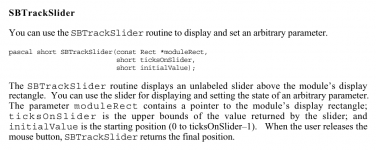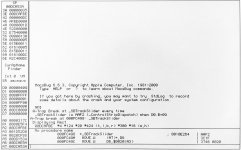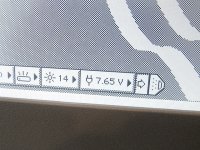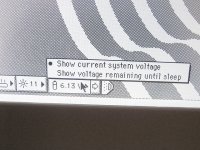PB170
Well-known member
Thanks for the links! I've been learning to program with the mac toolbox for quite a while now but I've been completely unaware of the existence of that magazine. What a wonderful resource! Programming on classic Mac OS suddenly feels like a much less disconnected endeavor  Thanks!
Thanks!
Unfortunately, and surprisingly, there's not a single instance of the phrase "control strip" in any of the issues…
After my previous post, I started to download some of the Apple Developer Connection CDs, which I also learned about quite recently. The Control Strip development kit appears for the first time in the Jan '96 issue, and also in the issue from Oct '98 – with the same version, and the same technical note. One would think the problem with the slider would have been covered by then… Very odd. Perhaps I'm the first one to try it…? Or maybe there's something wrong with my setup, or my code. But I can't see what that would possibly be… I've tried it with System 7.1.1 , System 7.5.3 and System 7.6. All return the same negative values, and on Mac OS 9 it works just fine.
Or maybe there's something wrong with my setup, or my code. But I can't see what that would possibly be… I've tried it with System 7.1.1 , System 7.5.3 and System 7.6. All return the same negative values, and on Mac OS 9 it works just fine.
If the values were just constant, perhaps I could remap them to the actual setting. Obviously a very convoluted way of doing it, but…
Do tell me if you have any other ideas.
Unfortunately, and surprisingly, there's not a single instance of the phrase "control strip" in any of the issues…
After my previous post, I started to download some of the Apple Developer Connection CDs, which I also learned about quite recently. The Control Strip development kit appears for the first time in the Jan '96 issue, and also in the issue from Oct '98 – with the same version, and the same technical note. One would think the problem with the slider would have been covered by then… Very odd. Perhaps I'm the first one to try it…?
If the values were just constant, perhaps I could remap them to the actual setting. Obviously a very convoluted way of doing it, but…
Do tell me if you have any other ideas.






